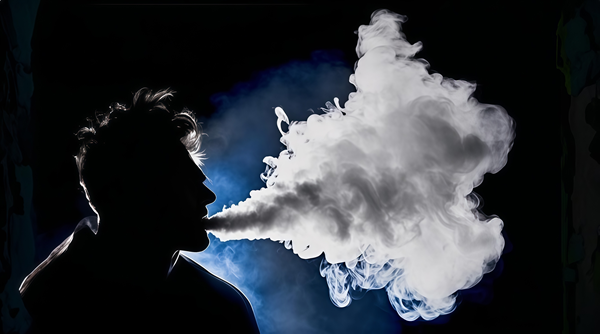Cannabis Vape:High Temperature VS Low Temperature Vaping
In cannabis vaping, the temperature at which you vape can significantly impact both the flavor and the effectiveness of your experience. Let's delve into the differences between high - temperature and low - temperature vaping and how they affect the active ingredients in cannabis oil, such as THC, CBD, and terpenes.

Impact on Active Ingredients Release
THC and CBD
THC (tetrahydrocannabinol) and CBD (cannabidiol) are two of the most well - known cannabinoids in cannabis. Different temperatures can influence their vaporization rates. At lower temperatures, around 350 - 370°F (177 - 188°C), the vaporization of THC and CBD starts to occur.
However, the release may be slower and less complete compared to higher temperatures. As the temperature is increased to around 400 - 420°F (204 - 216°C), more THC and CBD are vaporized, leading to a stronger psychoactive or therapeutic effect, depending on the ratio of these cannabinoids in the oil.
Terpenes
Terpenes are aromatic compounds in cannabis that contribute to its unique flavor and may also have various therapeutic properties. Low - temperature vaping, typically in the range of 320 - 350°F (160 - 177°C), is believed to be more effective in preserving terpene flavors. This is because terpenes have relatively low boiling points, and lower temperatures can vaporize them without burning or degrading their structure.
For example, limonene, a common terpene in cannabis with a citrusy flavor, is better retained at lower vaping temperatures, resulting in a more flavorful and terpene - rich experience.
Does High - Temperature Vaping Destroy Active Ingredients?
While high - temperature vaping can increase the vaporization of cannabinoids, there is a concern that extremely high temperatures can potentially damage or destroy some of the active ingredients. When the temperature exceeds 450°F (232°C), there is a risk of thermal degradation.
THC can break down into other compounds, such as CBN (cannabinol), which has different psychoactive properties. CBN is more sedating than THC, and its formation at high temperatures may not be desirable for those seeking the classic THC - induced effects. Additionally, terpenes can be easily oxidized or burned at high temperatures, losing their characteristic flavors and potentially some of their beneficial properties.
Which Cannabis Vape Method is Healthier?
From a health perspective, low - temperature vaping is generally considered a better option. When cannabis is vaped at lower temperatures, there is less production of harmful by - products.And more important low temperature vaping is believed to prevent the terpene being burned and get a more flavorful vapor. High - temperature vaping, especially when it approaches combustion (around 500°F or 260°C), can produce substances similar to those in cigarette smoke, such as aldehydes and other toxic compounds.
These can be irritating to the respiratory system and may pose long - term health risks. Low - temperature vaping, on the other hand, allows for the inhalation of cannabinoids and terpenes with fewer potentially harmful substances, making it a potentially healthier way to consume cannabis.
Adjusting Temperature Settings According to Personal Needs

For Flavor Enthusiasts
If you are someone who values the rich, complex flavors of cannabis vape, low - temperature vaping is the way to go. Start with a temperature in the range of 320 - 350°F (160 - 177°C) and gradually increase it if you find that the vapor production is too low. This will help you enjoy the full spectrum of terpene flavors, enhancing your overall vaping experience.
For Potency Seekers
Those looking for a more potent effect should consider higher temperatures. Begin with a temperature around 400°F (204°C) and adjust upwards if needed.
However, be cautious not to exceed 450°F (232°C) to avoid potential degradation of the active ingredients. By gradually increasing the temperature, you can find the sweet spot that provides the desired level of potency without sacrificing too much flavor.
In conclusion, understanding the differences between high - temperature and low - temperature vaping is crucial for optimizing your cannabis vaping experience.
Whether you prioritize flavor, potency, or health, adjusting the temperature settings can help you achieve your desired results in cannabis vape.